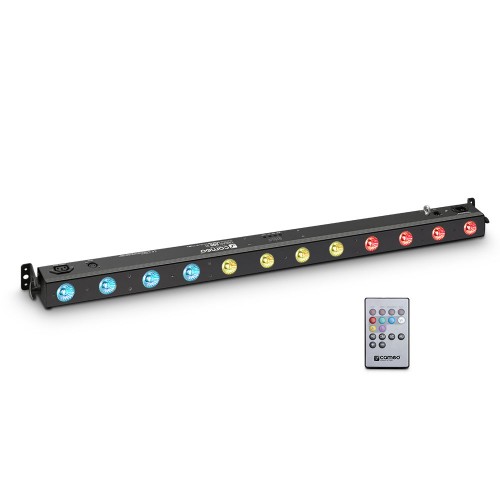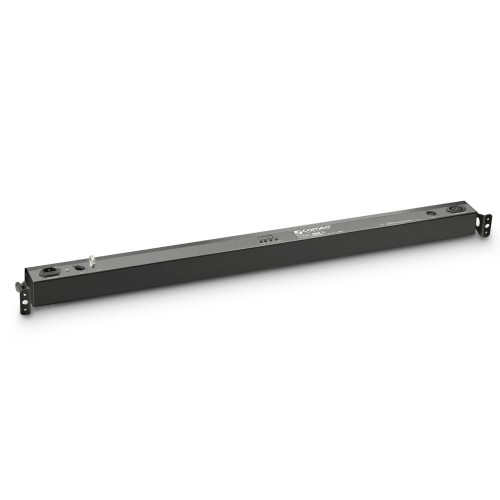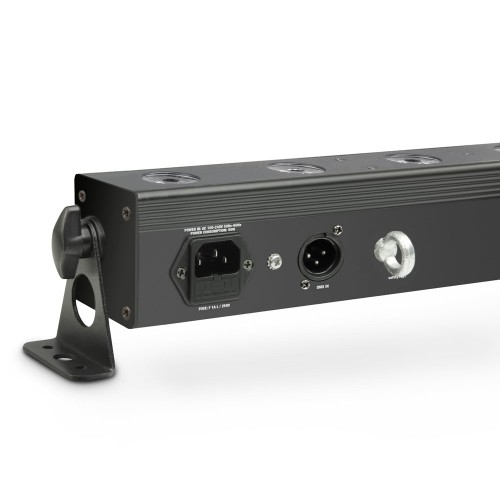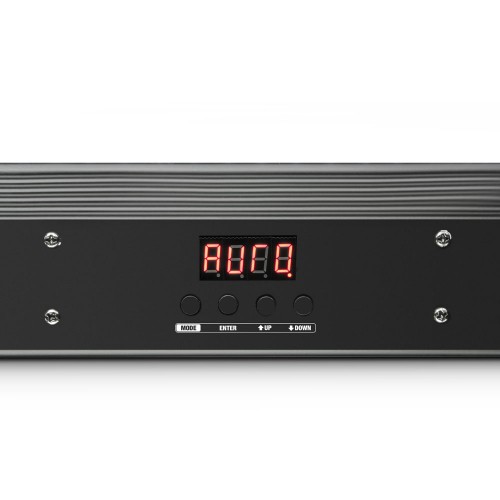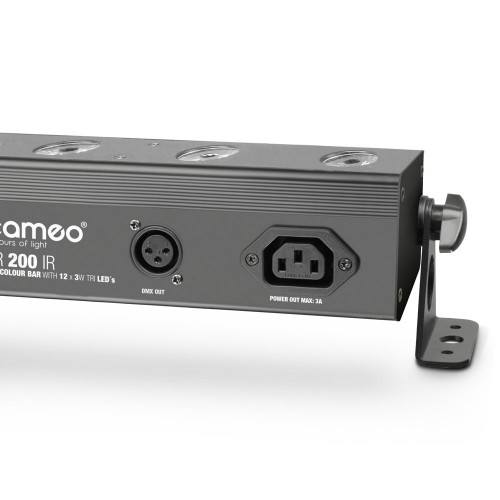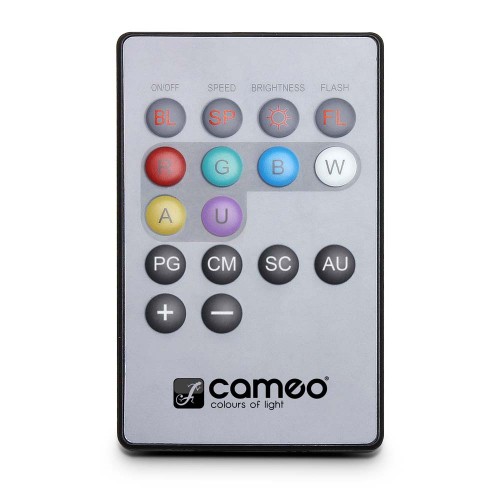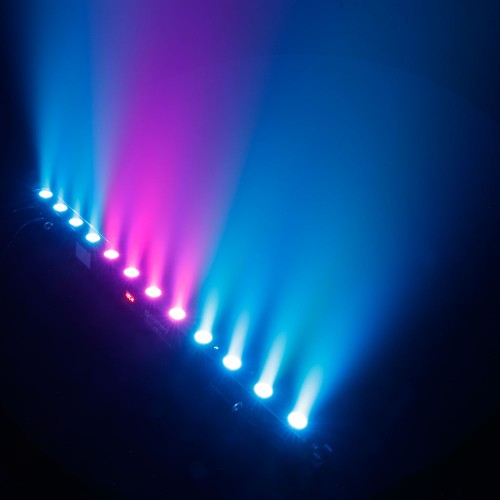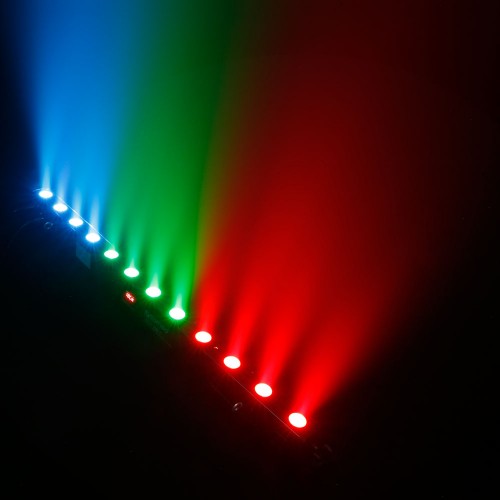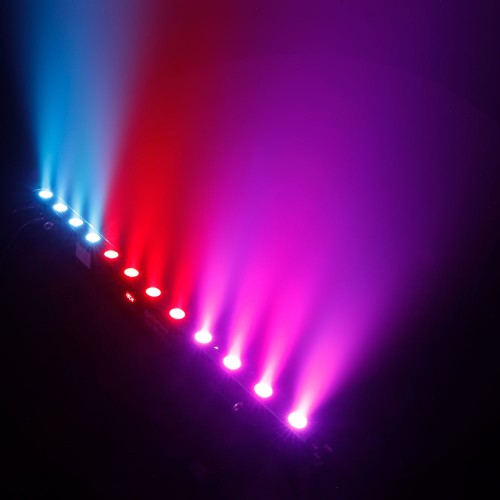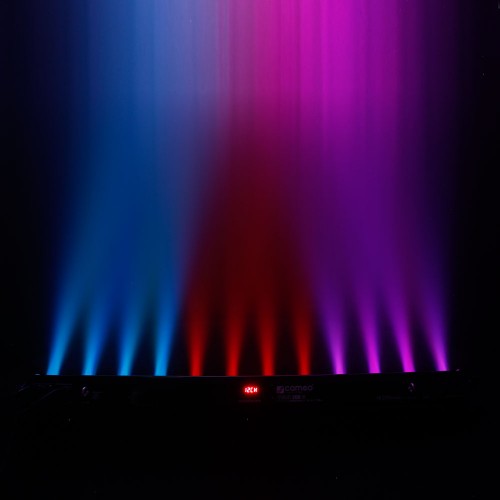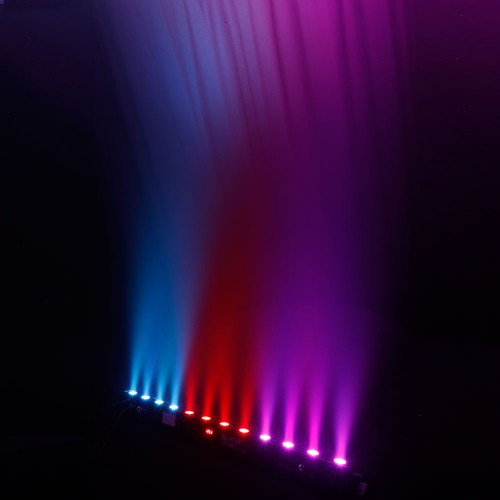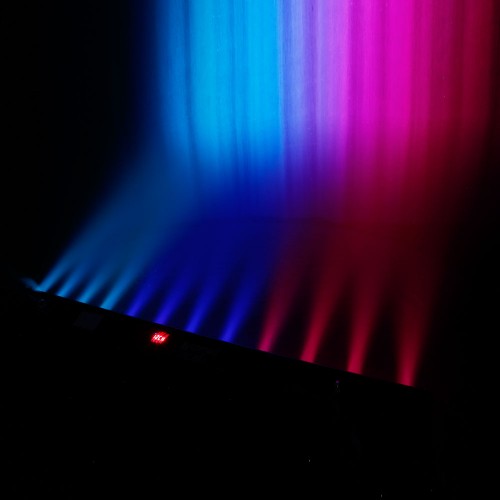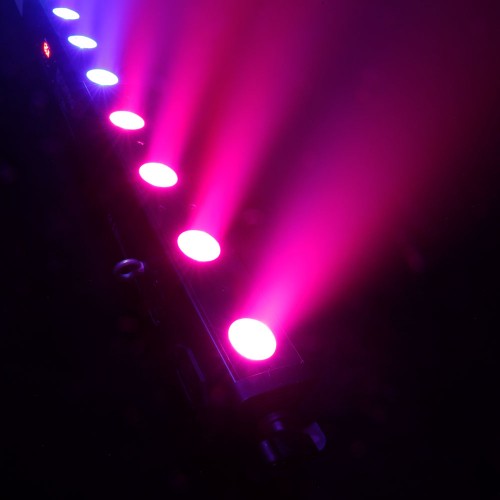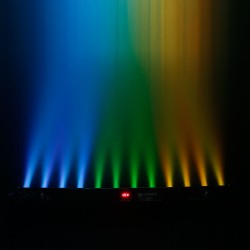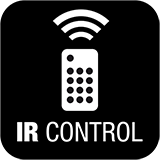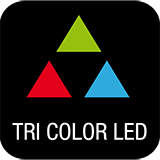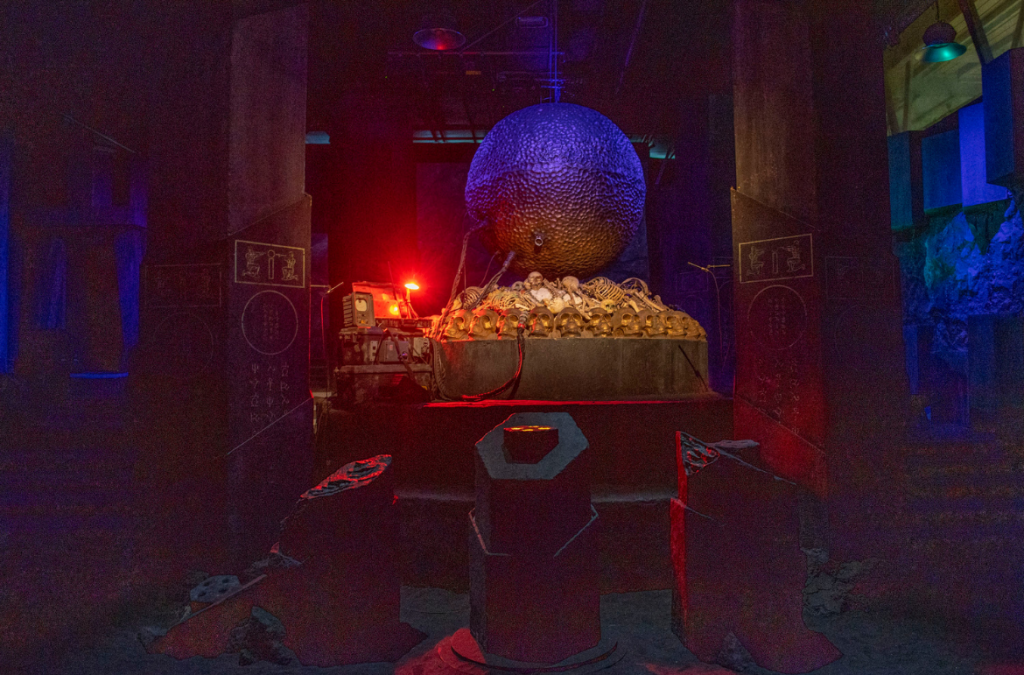DMX512
Communication standard DMX512 was developed specially for lighting systems in 1986. Up to 32 DMX devices can be daisy-chained and controlled via a control source (e.g. a light mixer).
Environment-friendly
The high energy efficiency, the long service life of the LED lamps and the low level of heat dissipation make this device particularly environment-friendly.
Infrared remote control
The device is fitted with an infrared sensor and can be controlled wirelessly using the IR remote control unit included.
LED technology
LEDs are ideal for use in lighting systems: They are bright and have a low level of heat dissipation, a long operating life and low energy consumption. Moreover, LED systems often weigh less than conventional lighting systems.
Master & slave
Master/slave operation allows identical DMX devices to be controlled by a DMX device of the same model and software standard. All the devices are connected by DMX cables in series. The master device is then set to run in standalone mode and the slave devices are set to run in slave mode.
RGB additive colour system
With additive colour blending, all colours and white are created by blending different amounts of red, green and blue light. The RGB system is used in televisions, computer monitors and digital cameras, for example.
Music control
In music control mode, the device is controlled via the built-in microphone and can follow the rhythm of the music, for example.
Standalone mode
In standalone mode, the device functions are controlled via integrated programmes, so no light mixer or “master” controller is required.
Strobe
Strobes emit fast flash sequences, which makes movements appear “frozen” and creates a kind of slow-motion effect.
Three-colour RGB-LEDs
In RGB LEDs, also known as 3-in-1 LEDs, each LED has its own red, green and blue emitter. This means that each individual LED can display the additive RGP spectrum as well as white.
